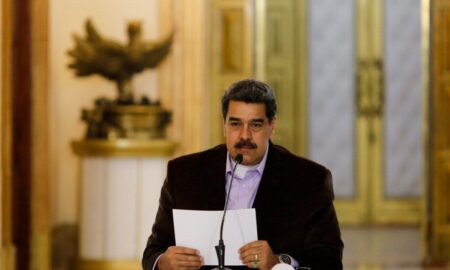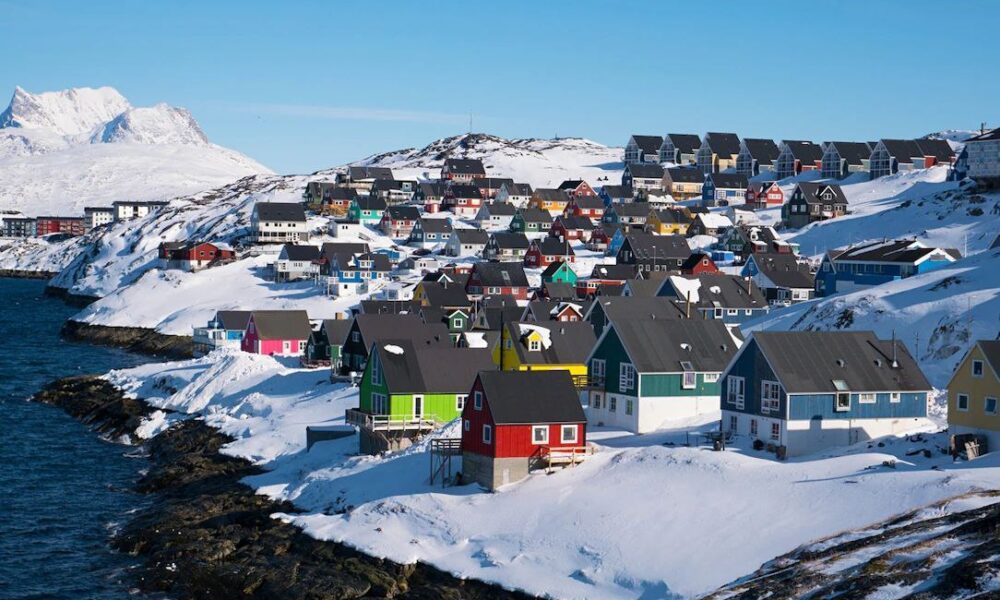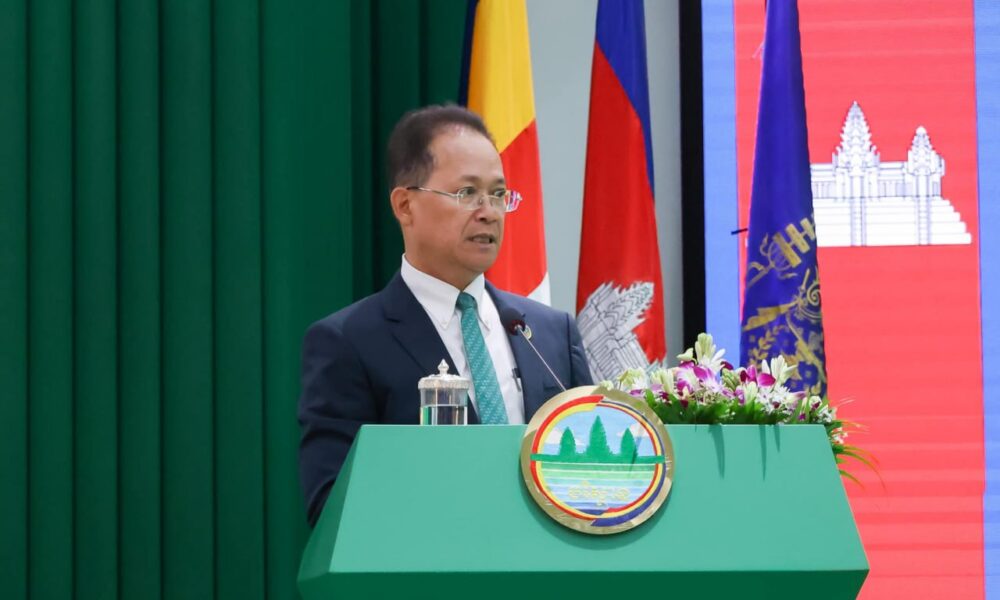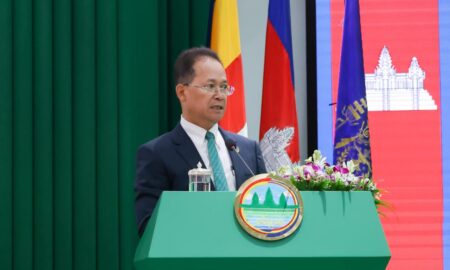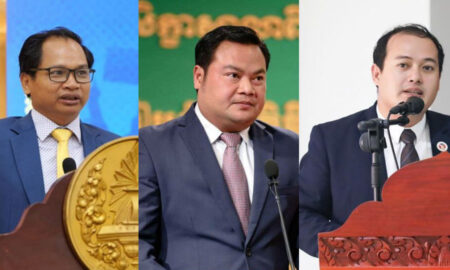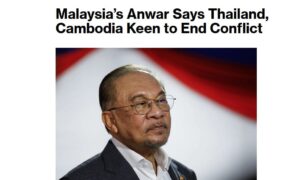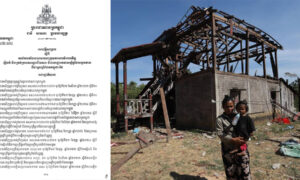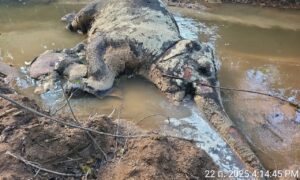A conversation with Prof. Mohan Munasinghe, Nobel Peace Prize co-winner and environment economist
In 2007, Mohan Munasinghe shared the Nobel Peace Prize with former US Vice President Al Gore. Today, he talks with Transform about what the global mining industry must do to overcome its legacy of pollution and looks at the nexus of sustainability, mining, and digital technology.
Gavin Allen: Hi there. I’m Gavin Allen. And in this third edition of Transform – the e-magazine produced by Huawei that looks into the technological changes that are impacting societies, we are looking at the subject of mining. And against a historical backdrop for the industry of pollution, waste, natural resource depletion, and social exploitation, we’re looking at the question of whether sustainable mining is something of a contradiction in terms. Who better to answer that than the father of Sustainomics, prolific author and world authority on sustainable development, energy, economics, and the environment, the former Vice Chair of the UN Intergovernmental Panel on Climate Change, and, in that role, co-recipient of the 2007 Nobel Peace Prize, Professor Mohan Munasinghe.
I should say that list of accolades and titles that was already quite long could justifiably have gone on considerably longer.
Professor, thanks so much for joining us. Can I start just by asking you about what you think are the primary goals that need to be addressed by the mining industry in the context of sustainable development, both in the short and the long term?
Prof. Munasinghe: Hi everyone. Greetings from Sri Lanka, Gavin. I’m delighted to be on this programme with you. Thank you for inviting me. You’ve asked the most difficult question right at the start. So, let me say that sustainable development is the overarching challenge facing humanity in the 21st century. Meanwhile, mining supplies minerals, which are essential to support all sectors of modern economies and human lifestyles. Finally, remember that digital technologies are heavily dependent on mining, and have major impacts on both the supply and the demand for minerals, as well as on sustainable development. So it is useful to analyse the nexus of sustainability, mining and digital technology, to identify the key issues facing the mining industry.
The Sustainomics transdisciplinary framework, which you kindly mentioned in the introduction, first presented at the 1992 UN Rio Earth Summit, is a convenient starting point. The Sustainable Development triangle is a key principle, which states that Sustainable Development can be best analysed according to its economic, environmental, and social dimensions.
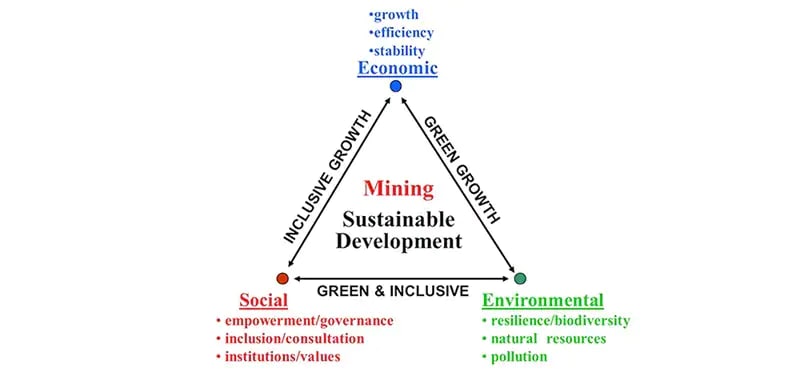
Mining activities can enhance economic development, driving growth, creating livelihoods and reducing poverty, helping build key infrastructure, and raising revenues. However, mining depends on extracting a finite, non-renewable resource, and declining ore quality, rising unit extraction and waste disposal costs, and other impacts will undermine future economic sustainability. Next, environmental sustainability is threatened by mining operations, growing wastes and emissions. Finally, social impacts on local and indigenous communities, including exclusion and human rights violations, are causing conflicts with mining companies and threatening social sustainability.
Nevertheless, mining must grow for the foreseeable future, to supply industry and consumers, so we need a broader viewpoint. In the long term, sustainable mining will have to ensure an ecologically viable global mineral supply. Humankind is already overusing planetary ecological resources equivalent to 1.7 Earths. And by 2030, we will need the equivalent of two planets to sustain our current way of life. Secondly, it is the richest 20% of the world’s population who consume more than 85% of planetary resources, which is 60 or 70 times more than the consumption of the poorest 20%. Furthermore, just 1% of the rich emit 175 times more greenhouse gases per capita than the poorest 10%. Third, we have not been able to eradicate poverty in the past, because when the rich overconsume, they are using more than one planet, there are no resources left to help the poor. These are the major issues identified in Sustainomics, and the reason why many promises by world leaders have not been kept.
The UN Universal Declaration of Human Rights, UDHR, in 1948 was signed by all countries. Very good document. Today, we have the Sustainable Development Goals. And all 17 of these goals were already contained in the original UDHR. It highlights that we have not been able to make any real progress on sustainable development for 70 or more years!
If nothing is done, unrestrained market forces, and lack of ethical and moral values will cause more poverty, inequity, pandemics, environmental problems, terrorism, and global system collapse. Nevertheless, the rich will prosper in enclaves, and the poorest will die outside, in misery.
As a practical solution, I proposed the balanced inclusive green growth, or BIGG, path, to convince powerful world leaders and policy-makers attending the Rio+20 Earth Summit of 2012. BIGG starts by reconciling just two goals – economy and environment, instead of the entire triangle. These two were chosen partly because of the common misconception that environmental protection required the sacrifice of economic growth. This is not true. This “green economy” approach is highly relevant, especially for production, where resource-efficient technologies that reduce resource use and costs, while increasing profits, show that economic and environmental goals are compatible.

To understand the essence of BIGG, look at this diagram, consider the relationship between environmental harm, and economic prosperity, measured by GNP.
Poor nations are at point A – with low income and low emissions. Rich nations at point C are already unsustainable and exceeding safe ecological limits. Wealthy countries can re-balance environment and economy to reach sustainable point E, by reducing environmental resource use while maintaining their good quality of life. Nobody has to become poor. They could use new resource efficient technologies, lifestyle changes, etc., that dematerialize modern economies. This is called green growth. Meanwhile, emerging nations at intermediate point B should learn from the past by innovating. They could go through the green growth (GG) tunnel to also reach point E, without exceeding safe limits – by avoiding the unsustainable path of rich countries. Sustainable mining must follow this BIGG path which harmonizes economy and environment.
However, we must go beyond green growth, to also satisfy social goals. In the second step, green growth is further improved by adding pro-poor, inclusive and inequality-reducing policies, to create the balanced inclusive green growth (BIGG) path – also relevant for sustainable mining. This process fully harmonizes the sustainable development triangle: economy, environment and society.
Sustainable production and mining need to be complemented by sustainable consumption and lifestyles. This will help us avoid Jevon’s Paradox, which says that every improvement in resource-saving technology results in large increases in consumption of the cheaper products, ultimately resulting in even greater resource use. To avoid resource depletion, a virtuous cycle of sustainable producers and sustainable consumers must be encouraged, to build a sustainable society and markets.
Gavin Allen: It’s really interesting. There’s a lot of very sobering statistics and insights within that answer, and obviously a lot of very important themes that we’ll come back to later in the interview. Can I ask on a specific basis, what do you think the potential is for AI in mining to help transform mining?
Prof. Munasinghe: I think it is more relevant to respond to this very important question, within the broader context of the digital technology revolution, DT.
which will be a major driving force in reviving the post-pandemic global economy. COVID-19 has in fact accelerated the growth of DT and touchless transactions, while enhancing efficiency and reducing costs in most sectors. It is clear that in the post-pandemic world, DT will help to resuscitate the global economy by accelerating the recovery of damaged supply chains and creating more livelihoods. As a global DT leader, Huawei is well positioned to play a key role in this transformation.
Undoubtedly, DT will yield both benefits and risks, as we move forward. First, economic gains include increased productivity and growth, as well as greater variety of goods and services. Economic risks include widening the gap between the rich and the poor, greater risks of macroeconomic instability, because of unpredictable financial and trade flows, and fiercer competition and risks for firms in a rapidly evolving business environment.
Second, environmental advantages of DT include reduced natural resource use through more efficient production, and improved technologies for pollution management. Risks arise from the generation of more economic growth that causes uncontrollable consumption and production, which I call Jevon’s Paradox, leading to more pollution and natural resource use. Furthermore, greater demand for DT will require more mining and energy use, while causing more pollution, for example, through e-wastes.
Finally, social benefits include more employment and income, especially for the poor, increased participation and empowerment, via improved communications, social media, and greater access to information. Potential dangers include greater exclusion of the poor and increasing inequality, destructive use of information, and more marginalization of indigenous knowledge, as well as reduced cultural diversity.
Digital technology itself, including AI, can help improve mining sustainability. First of all, it can generate environmental, social and economic data along supply chains, and use this data to minimize environmental and social harm, while maximizing economic gains. Second, it can improve the circular economy, by reducing waste, recycling and redistributing waste for alternative use. Third, technology products could be designed to minimize technological waste and improve recyclability. Fourth, digital technology can be used to increase consciousness and encourage innovation that promotes sustainable goods and services on an even larger scale.
Automation has potential to improve the mining industry in terms of productivity and human safety. Automated machinery can improve productivity, since AI can gather and analyze data much faster than humans – by reducing operating costs, monitoring and controlling mining processes involving ventilation, energy use, transport, waste, etc., while also improving exploration and resource discovery; advancing raw material sorting, and so on.
In terms of safety, AI allows machines to access areas and environments that may be too dangerous for humans, thereby improving safety and security. Overall, AI will enhance risk management. More efforts should be devoted to applying DT and AI to protect the environment and improve human safety and well-being along the entire supply chain.
Gavin Allen: One obvious goal would be to achieve zero coal mine deaths. Does that mean the primary challenge should be to eliminate the need for any coalface worker, and sometimes unreliable safety supervisors?
Prof. Munasinghe: A tricky question, but reducing coal mine deaths and injuries should be one of the main goals, while supporting broader efforts to reduce the unequal distribution of bargaining power and wealth among the parties involved in coal supply chains, and to minimize environmental harm. This includes unfair distribution of costs among the supply chain players, for example, workers and communities at the bottom of the chain have to bear disproportionately high impacts of environmental pollution. The death and health issues caused by pollution externalities may not be immediate but may occur after several years and are often ignored by policymakers, public and private.
Gavin Allen: I guess the obvious problem is that more automation means fewer workers, which is safer, but obviously means raising unemployment potentially. Is that a price worth paying?
Prof. Munasinghe: Again, this issue also needs very careful assessment. Greater automation will allow greater economic prosperity, but like any other disruptive technology, decisionmakers in government, business, and civil society, especially scientists, must work together to facilitate a smooth transition. For example, preparing the old and the young workforce for new kinds of jobs. “ Is the price worth paying?” – this is not just a simple question of having one group of people paying the cost while another reaps the benefit. The technological transformation, unlike the recent pandemic, has given us enough time and ample knowledge which allow us to design for the future. If we plan properly, we can protect everyone without any one group having to pay too high a price. Innovative technology must pay equal attention to social and environmental concerns, because every life does matter.
Gavin Allen: Isn’t there a risk that innovation, of which we’ve spoken in technology, could make mining more efficient, cheaper, and safer, then it will therefore increase profitability, and actually ironically extend the life of an industry that many see as environmentally divisive?
Prof. Munasinghe: True, but the mark of wisdom is to see something as a part of the solution rather than as a part of the problem. We have a goal to reduce carbon emissions and burning coal is one of the main causes of it. Therefore our goal must be to reduce total emissions from coal extraction and burning. Mining company profits should not be exempt from the global externality costs of potential climate change damage due to greenhouse gas emissions. The economic cost-benefit analysis should incorporate, as much as possible, local, regional environmental pollution and social damage costs.
To preserve planetary health, sustainable mining must adjust to respect these constraints.
Gavin Allen: Do you think we are potentially approaching this all wrong, or from a wrong end, that rather than seeking to kill off coal mining, can it actually be transformed into a truly green industry, which is what you are effectively alluding to? What would that take? I mean has there been too much focus on ending mining, rather than making it more sustainable? Particularly, as it is so important, many of the resources are so important to the pursuit of modern technology, whether it is EV batteries or wind turbine magnets. So mining still vital and actually thriving.
Prof. Munasinghe: Absolutely correct, Gavin. The whole purpose of BIGG is not to kill industries that provide jobs for millions of workers, but rather to transform production and consumption onto a BIGG path that will be more sustainable and green. But there are no piecemeal targets for mining. They must fit within a broader integrated framework of balanced inclusive green growth and the global SDGs.
Mining of minerals essential to achieve BIGG must continue, including rare earths, cobalt and lithium for mobile phones, electric vehicles and wind turbines, etc. We also need an economic transition period to phase out fossil fuels, including coal and oil, and replace them with clean energy. Clean coal technologies, carbon capture and storage, and other methods will also play a role during the transition. Sustainable mining will also place more focus on environmental and social impacts over the entire product cycle. AI and digital technology could play a key role in developing smart, sustainable mining approaches that could help integrate the advances made by different mining companies in diverse parts of the earth within a comprehensive platform based on a unified architecture and standards. This idea is similar to the concept of smart sustainable systems I proposed for cities in 2015 to integrate a range of urban services within a unified platform usable around the world. If Huawei is working on that, more power to them.
Gavin Allen: What responsibility do you think that the mining industry and those involved in this industry have to the wider community?
Prof. Munasinghe: I think, to be frank, they are fully responsible for the destruction of local communities, together with compliant and often corrupt governments who have failed in their duty to protect the victims. In an ethical and sustainable world, a corporation should not expect to reap financial benefits through poor working conditions or by imposing more widespread pollution externality costs on others. Sustainability should be the norm.
The reality is different. Powerful mining companies negotiate special financial terms with governments in ways that benefit them, while avoiding accountability or responsibility for costs imposed on workers and the general public due to social and environmental externality impacts. Unrestrained and unregulated free markets undermine the sustainability of the entire system. This short-term view is sufficient for the firms to accumulate huge benefits for themselves, but creating big sustainability problems for us all in the future. Balanced inclusive green growth will require major changes in the current economic system and power structures.
Gavin Allen: It was interesting that last year at COP26, the gathering of nations to talk about climate change, there was a big debate. Some dismay, I think, in the west, or certainly west observers, that the idea of phasing out coal got diluted, in some people’s eyes, to phasing down coal. What was your own reaction to that?
Prof. Munasinghe: Fossil fuels cannot be phased out immediately, as we need a transition time for the world to maintain life during the transition time. So arguing about wording is not the way forward. In fact, I am often impatient with what happens at these COP gatherings, and I have attended many of them, because of the time spent on exact wording, without getting down to action. Coal is recognized as one of the main sources of carbon emissions and therefore we will have to reduce the coal mining to balance the CO2 within safe limits to achieve 1.5°C or even 2°C. Eliminating coal too quickly, on the other hand, will cause energy shortages that will affect the poor, while excessive greenhouse gas emissions from continued coal burning will worsen global warming that also affects the poor disproportionately. It is a tightrope. The coal phase-down or phase-out path within the BIGG trajectory will need to balance such conflicting concerns. What needs to be eliminated as soon as possible, is the rich obtaining of free pass and large profits from the coal industry, exempt from local and global environmental pollution externality costs that are borne mainly by the poor.
As the global push towards fossil-free energy sources, market mechanisms and so on will make it prohibitively expensive for coal producers to continue with coal mining, we need to make sure that coal and fossil energy will be still available until viable alternative energy sources are developed during the transition. As the life time of a coal mine is generally considered around 2 or 3 decades, coal investors must carefully assess the financial as well as reputational or branding and environmental risks when pursuing new coal mining projects. Each country should have the right to follow its own BIGG path, focusing first on local environmental concerns, which affect their own citizens – air and water pollution and land degradation, but staying within the global limits for critical pollutants like greenhouse gases.
Gavin Allen: What impact do you think increasingly polarized east-west geo-politics have on efforts to achieve greater sustainability in mining? Can rhetorical pressure drive and accelerate sustainability or, counter-intuitively, or counter-productively in fact, does it lead to a sort of determined resistance to being bullied on the parts of some countries?
Prof. Munasinghe: You bowled me a googly there, Gavin, in the cricketing parlance, or a curved ball, as the Americans say. The world is going through a major geo-political transformation, and how humanity manages it will affect our progress towards BIGG and achieving the SDG, including sustainable mining.
I think China will play a key role as the economic powerhouse of the world, champion of open trade, and leader in digital technology, with Huawei as a key contributor. As a global digital technology leader, China is becoming a super-connector that enhances east-west and south-north links, thereby facilitating global sustainable development along the BIGG path. By helping to better connect sustainable consumers and sustainable producers in the digital marketplace, DT can accelerate the growth of sustainable lifestyles and behaviors, and reward also sustainable mining practices upstream in the supply chain. It will make the world a better place for us all, as well as for future generations.
Finally, DT will facilitate the Belt and Road Initiative and help the ongoing transition to a more sustainable, peaceful and harmonious, multi-polar world order, built on mutually cooperative power centers like the Shanghai Cooperation Organization, the G77+China, the G20, EU, and so on. The new global order will rely on soft economic power and mutually beneficial trading relationships, facilitated by the use of multiple global currencies, the Chinese yuan, Euro, Japanese yen, US dollar, and so on. Most countries would welcome such a shift away from the existing system that often relies more on hard military power, punitive sanctions, and a single global currency, the US dollar. Such a trend towards a more sustainable and conflict-free planet will be universally welcomed, given the depressing current realities. Even while COVID-19 ravaged the world in 2020, the world’s billionaires increased their wealth by 11%, while billions starved. Also, the world in 2020 spent almost US$ 2 trillion on armaments while only US$ 161 million, a fraction of that, was spent to help the poor. A travesty.
Gavin Allen: Final, final question then. As you said, you have raised so many huge issues. I do not know if this takes it even bigger than the globe. I saw a quote recently about ambitions for mapping the terrain of the Moon and Mars. Do you think our sustainability concerns should go beyond concerns for just our own planet?
Prof. Munasinghe: Yes, another tricky question. But sustainability should be the dominant theme wherever humanity ventures. Stabilizing the future of the 7.5 billion people on earth should be our priority now. But meanwhile, exploration of other planets and unexplored regions of the earth, like the Polar Regions and deep oceans, for example, should be done on behalf of us all, since it is humanities’ common heritage. The inequality and absurdities of the current world should not be repeated in new regions and on new planets, as they open up. Thank you very much, Gavin.
Gavin Allen: Thank you, Prof. Munasinghe. I’m sure the universe can wait. We’ll try and get the earth correct first and tackle that issue first. But thank you very much for joining us.
Prof. Munasinghe: Well said.

Warning: Attempt to read property "term_id" on false in /var/www/dap-news.com/htdocs/wp-content/themes/flex-mag/functions.php on line 999







